Pro Tips
Music Tagging best practices - 5 tips to tag like a pro
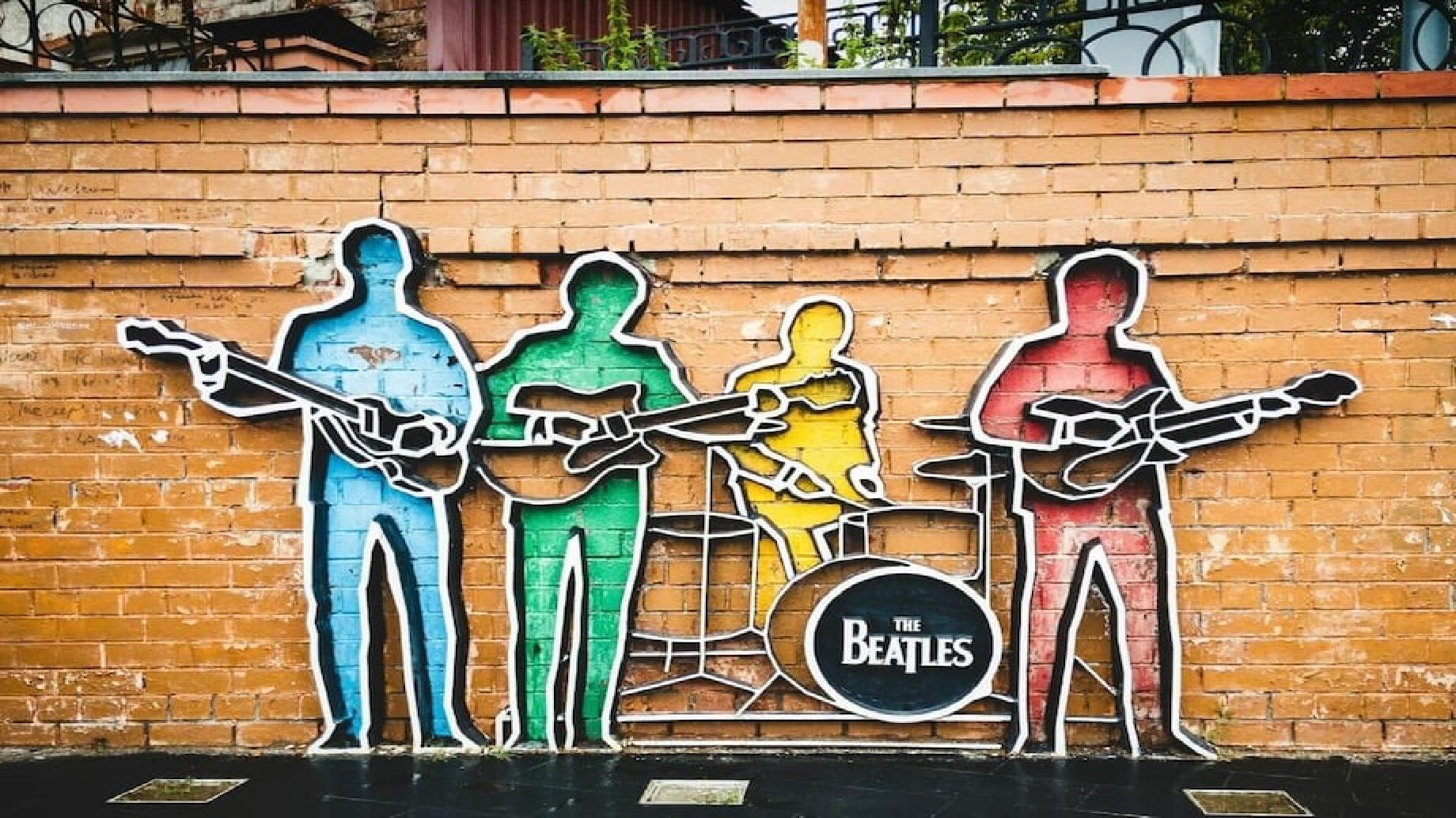
Music tagging is the process of adding labels to audio files to describe their content. These tags can include anything from the genre and artist to the tempo and mood of the song. Music tagging can be done manually or automatically, but automatic music tagging is becoming increasingly popular as it can save a lot of time and effort.
What are the benefits of music tagging?
There are many benefits to music tagging, including:
Improved organization: Music tagging can help you to organize your music library more effectively, making it easier to find the songs you want to listen to. It is very useful for labels or music supervisors to be able to sort music through tags to find what they are looking for.
Better recommendations: Music tagging can also help music streaming services to provide you with better recommendations, based on the songs you have tagged in the past.
Increased discoverability: If you make your tagged music files public, it can help other people to discover your music.
Improved accessibility: Music tagging can also make music more accessible to people with disabilities, such as those who are blind or have low vision.
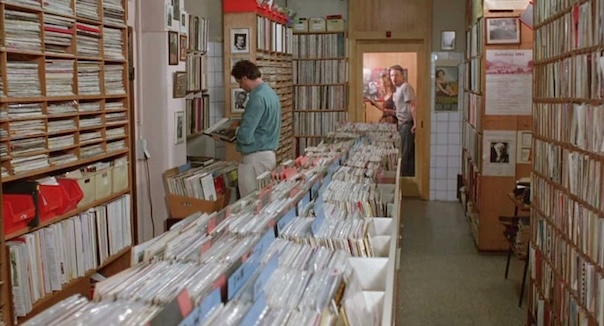
5 best practices for music tagging
Here are the five best practices when it comes to music tagging:
Consistency:
When tagging your music, try to be as consistent as possible. This means using the same tags for the same type of information, such as genre, artist, and album. It also means using the same format for your tags, such as all caps or all lowercase.
Specificity:
The more specific you are when tagging your music, the better. This means using tags that describe the unique characteristics of each song. For example, instead of tagging a song as “rock,” you could tag it as “punk rock” or “hard rock.”
Diversity:
Don’t be afraid to use multiple tags to describe a song. This will help you to find your music more easily and get better recommendations from music streaming services.
Use genre tags:
Genre tags are one of the most important types of music tags. They help you to organize your music library and get better recommendations from music streaming services.
Use artist tags:
Artist tags are also very important. They help you to find all of the songs by a particular artist, even if they are on different albums.
Using Bridge to tag your music
Amongst its many uses, Bridge can be used to gather catalogs, their metadata and tag them !
Our Music Tagging AI :
Our AI will enrich your catalog with the following tags :
Genre: Blues, Classical, Disco, Electro, per Country or Region, etc..
Sub-genre: Ambient, Alternative, Experimental, Techno and many more specific genre
Vocal genre or instrumental
Vocal type: sweet, lyric, shouted, rapped, etc..
Instruments per type or by specific instrument
Textures
FXs
Moods: Calm, Elegant, Dark, Emotive, Energetic and many others
Image: Build Up, Clumsy, Chase, Explosion, Contrast, etc.
Key
BPM
Once the catalog is enriched, you will still have the possibility to add custom tags to your catalog to match your workflow ideally. This allows you to be able to go through your catalog seamlessly and stop spending hours looking for that specific song 😉
For those who want to pitch their music, our AI also lets you generate a pitch for your track. To do this, join our Discord!
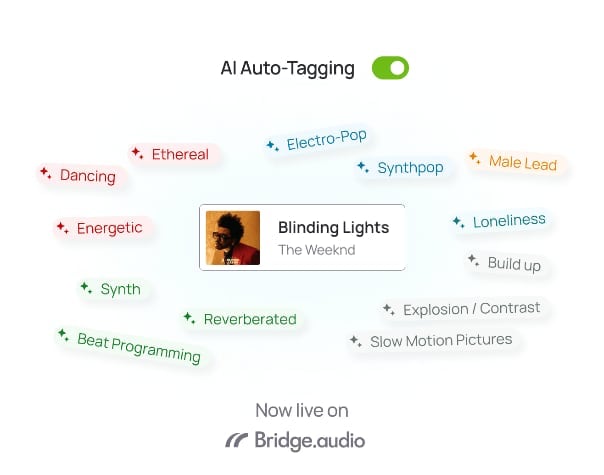
Bridge, a music metadata management tool :
As mentioned prior, additionally to our AI music tagging feature, Bridge.audio will get all metadata for you including :
Artwork Title Artist Track number ISRC ISWC UPC Genre(s) Recording Date Release date Publisher(s) Label(s) Author(s) Composer(s) Lyrics
Moreover, you will be able to manage the music’s metadata of the tracks in your Bridge workspace tracks, including extended music tags, and credits for each track. Bridge is also 100% ID3 tags compatible.
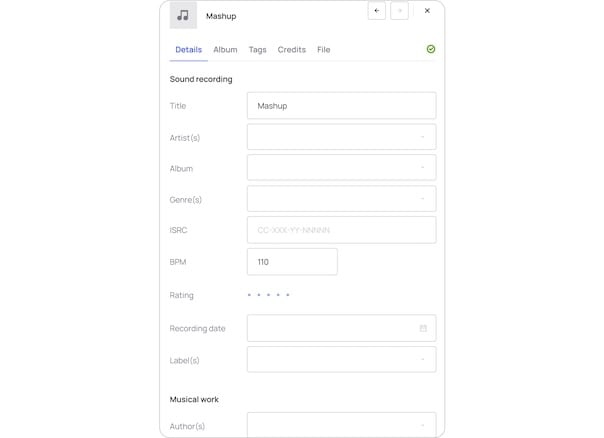
Differences between music tagging and music metadata :
Music tagging is the process of adding labels to audio files to describe their content. These tags can include anything from the genre and artist to the tempo and mood of the song. Music tagging can be done manually or automatically.
Music metadata is the information that is embedded in an audio file. This metadata can include the same types of information as music tags, such as the genre, artist, and album. However, music metadata can also include other information, such as the track number, release date, and copyright information.
In other words, music tagging is the process of adding descriptive labels to audio files, while music metadata is the information that is embedded in audio files.
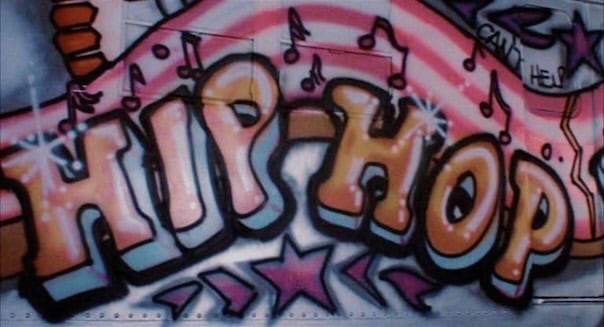
Here are some additional tips for music tagging:
In case you need even more good practices we added the following list !
Use descriptive tags: Avoid using generic tags such as “good” or “bad.” Instead, use tags that describe the unique characteristics of each song, such as the mood, tempo, and instrumentation.
Use consistent tag formats: Use the same capitalization and punctuation for all of your tags. This will make it easier to find your music and get better recommendations.
Use synonyms: If you can’t think of a specific tag, try using a synonym. For example, instead of tagging a song as “happy,” you could tag it as “cheerful” or “upbeat.”
Tag multiple genres: If a song fits into multiple genres, tag it with all of them. This will help you to find the song more easily if you’re looking for a particular genre.
Tag albums: If you have an album that you want to keep together, tag all of the songs on the album with the same album tag. This will make it easier to find the album in your music library.
Tag compilations: If you have a compilation of songs from different artists, tag all of the songs on the compilation with the same compilation tag. This will make it easier to find the compilation in your music library.
Tag playlists: If you have a playlist of songs that you want to keep together, tag all of the songs on the playlist with the same playlist tag. This will make it easier to find the playlist in your music library.
Tag live recordings: If you have a live recording of a song, tag it with a live recording tag. This will help you to keep track of your live recordings and find them more easily in your music library.
Tag covers: If you have a cover of a song, tag it with a cover tag. This will help you to keep track of your covers and find them more easily in your music library.
Tag remixes: If you have a remix of a song, tag it with a remix tag. This will help you to keep track of your remixes and find them more easily in your music library.
Tag bootlegs: If you have a bootleg of a song, tag it with a bootleg tag. This will help you to keep track of your bootlegs and find them more easily in your music library.
